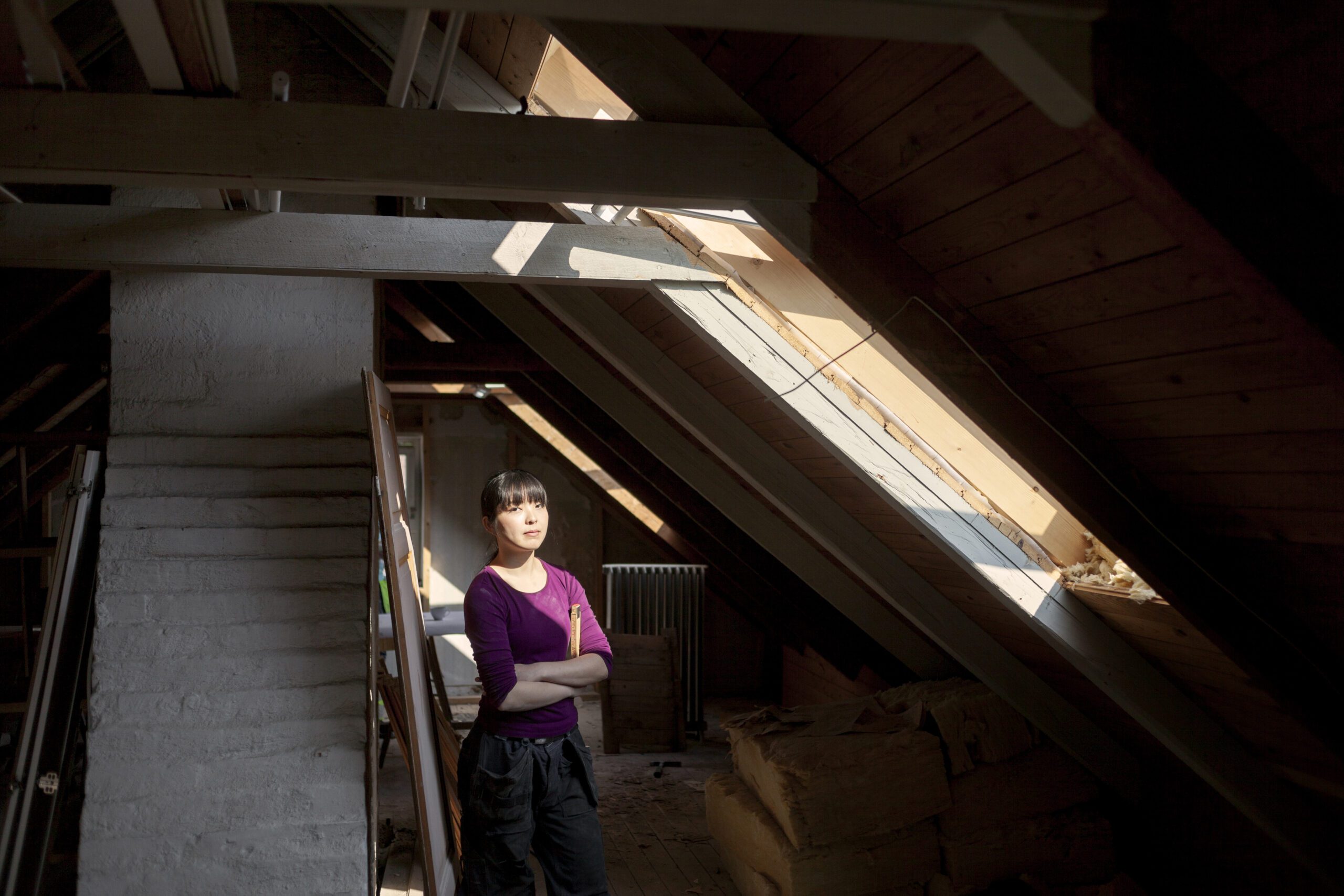Attic Rain vs. Roof Leaks: How to Tell the Difference and Protect Your Home
Table of Contents
Introduction

Calgary’s harsh winters can bring a variety of home maintenance challenges, particularly
attic rain and roof leaks. Though they may seem similar at first glance, they stem from
different causes and require distinct solutions. Knowing how to tell them apart can help
homeowners prevent costly damage and protect their homes. This guide will walk you
through the key differences and how Calgary’s unique weather contributes to both issues.
What is Attic Rain?
This occurs when warm, moist air from inside the home rises into the cold attic,
condenses on cold surfaces, and freezes. When temperatures rise, the frost melts, leading to water dripping onto insulation and attic floors. This usually happens during winter cold spells followed by a sudden thaw, a weather pattern typical in Calgary. Signs of attic rain include frost on the underside of the roof, dripping water in the attic, and water stains thatappear after a freeze-thaw cycle. Need more help identifying attic rain in your home? Check out our post about How to Identify Attic Rain in Your Home .

What is a Roof Leak?

A roof leak, on the other hand, is caused by external factors such as rain, snow, or ice penetrating the roof’s exterior due to damaged shingles, flashing, or poor drainage. Roof leaks can cause wet insulation, stained ceilings, and water damage inside the home,
particularly after heavy rains or snowstorms. Unlike attic rain, which is linked to indoor humidity, roof leaks are driven by external weather conditions.
Key Differences Between Attic Rain and Roof Leaks
- Timing: Attic rain occurs during the winter when frost forms and melts during
freeze-thaw cycles. Roof leaks are more common during or after rainstorms,
snowstorms, or when ice dams form on the roof. - Damage Location: Attic rain primarily affects the attic space, causing frost, damp
insulation, and water stains on the attic floor. Roof leaks typically impact areas
beneath the roof, including ceilings, walls, and insulation, leading to water spots and
potential mold growth. - Cause: Attic rain is caused by indoor humidity escaping into the attic, while roof
leaks stem from external damage to roofing materials.
How Calgary’s Weather Affects Attic Rain and Roof Leaks
Calgary’s cold winters, combined with warm indoor temperatures, are the perfect conditions for attic rain. The city’s sudden temperature swings, known as chinooks, can cause frost to
melt quickly, mimicking rain inside the attic. On the other hand, Calgary’s strong winds, heavy snowfall, and rainstorms increase the risk of roof leaks. Snow buildup or ice dams can worsen roof damage, allowing water to enter the home during thaws or rain.
How to Prevent Attic Rain and Roof Leaks
- For Attic Rain: Improving attic ventilation helps reduce the amount of warm, moist air that escapes into the attic. Installing moisture-resistant insulation, such as fiberglass, can prevent water damage if attic rain occurs. Sealing air leaks in the home is also crucial to stop warm air from rising into the attic in the first place.
- For Roof Leaks: Regular roof inspections can help catch early signs of damage. Ensuring that gutters and downspouts are clear of debris will also help water drain properly, reducing the risk of leaks. Repairing damaged shingles or flashing promptly can prevent water from seeping in during storms.

What Do You Do if You Notice Attic Rain or Roof Leaks?
If you suspect you have attic rain, check for frost buildup or water stains in the attic. Address ventilation issues, install proper insulation, and seal air leaks. For roof leaks, inspect the roof for missing or damaged shingles, and check for water stains on ceilings and walls. It’s essential to have a professional inspect and repair roof damage to prevent further issues.
Conclusion
Attic rain and roof leaks are two distinct issues that can both cause significant damage if left
unresolved. Understanding the difference is crucial to protect your home. For Calgary
homeowners, addressing attic ventilation, upgrading insulation, and maintaining your roof
will help prevent both attic rain and roof leaks, keeping your home safe and energy-efficient
year-round. For more information on our services, check out our Fiberglass Insulation page and our comprehensive Attic Ventilation services. Learn about our commitment to sustainability on our About page and see our FAQ section for more details on how our insulation solutions can benefit you. Contact us today to schedule a free estimate and take the first step towards a more comfortable and energy-efficient home.


Add your first comment to this post